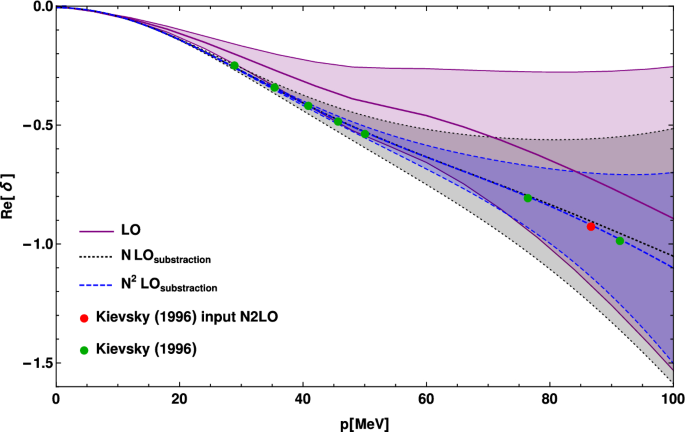无段EFT的另一种方案:双重态s波中的中子-氘核散射
IF 1.7
4区 物理与天体物理
Q2 PHYSICS, MULTIDISCIPLINARY
引用次数: 1
摘要
对两体振幅进行有效范围展开式可能会在展开式收敛范围之外产生虚假的亚阈值极点。在无限体积中,这种极点的出现导致三体振幅的统一性被破坏。讨论了将无自旋玻色子的无轴有效场理论中包含有效距离修正的替代减法方案推广到核子的问题。特别地,我们明确地考虑了双重态s波通道中的中子-氘核系统。本文章由计算机程序翻译,如有差异,请以英文原文为准。

An Alternative Scheme for Pionless EFT: Neutron-Deuteron Scattering in the Doublet S-Wave
Using the effective-range expansion for the two-body amplitudes may generate spurious sub-threshold poles outside of the convergence range of the expansion. In the infinite volume, the emergence of such poles leads to the breakdown of unitarity in the three-body amplitude. We discuss the extension of our alternative subtraction scheme for including effective range corrections in pionless effective field theory for spinless bosons to nucleons. In particular, we consider the neutron-deuteron system in the doublet S-wave channel explicitly.
求助全文
通过发布文献求助,成功后即可免费获取论文全文。
去求助
来源期刊

Few-Body Systems
物理-物理:综合
CiteScore
2.90
自引率
18.80%
发文量
64
审稿时长
6-12 weeks
期刊介绍:
The journal Few-Body Systems presents original research work – experimental, theoretical and computational – investigating the behavior of any classical or quantum system consisting of a small number of well-defined constituent structures. The focus is on the research methods, properties, and results characteristic of few-body systems. Examples of few-body systems range from few-quark states, light nuclear and hadronic systems; few-electron atomic systems and small molecules; and specific systems in condensed matter and surface physics (such as quantum dots and highly correlated trapped systems), up to and including large-scale celestial structures.
Systems for which an equivalent one-body description is available or can be designed, and large systems for which specific many-body methods are needed are outside the scope of the journal.
The journal is devoted to the publication of all aspects of few-body systems research and applications. While concentrating on few-body systems well-suited to rigorous solutions, the journal also encourages interdisciplinary contributions that foster common approaches and insights, introduce and benchmark the use of novel tools (e.g. machine learning) and develop relevant applications (e.g. few-body aspects in quantum technologies).
 求助内容:
求助内容: 应助结果提醒方式:
应助结果提醒方式:


